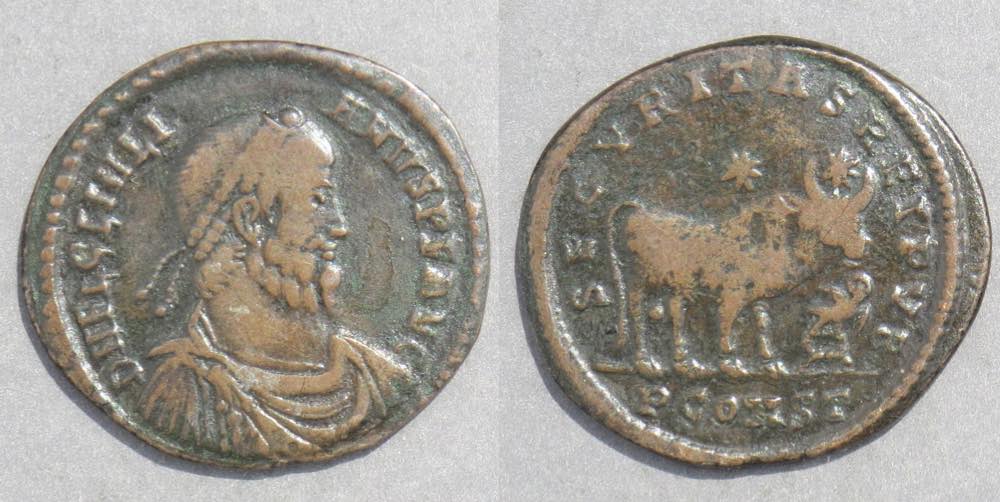

The "bull" type of Julian II (360-363) is famous and was even mentioned in antiquity.
"The Antiochenes not bearing the insult – for they are a people naturally impatient with insult – instantly broke forth into invectives against Julian, caricaturing his beard, which was a very long one, and saying that it ought to be cut off and manufactured into ropes. They added that the bull, which was impressed upon his coin, was a symbol of his having desolated the world. For the emperor, being excessively superstitious, was continually sacrificing bulls on the altars of his idols, and had ordered the impression of a bull and altar to be made on his coin."
-- Socrates, Historia Ecclesiastica 3.17; transl. A.C. Zenos.
Speculation since then has not convincingly explained the allusion of this bull and how it fits in with the coin's legend
SECVRITAS REIPVB.
DN FL CL IVLI-ANVS PF AVG
PCONST in exergue. The mint of Arles ("Arelate") was renamed "Constantina" in 328 in honor of Constantine II who was born there, but numismatists generally use the earlier name or the modern name. Arles was the only mint to use an eagle below the bull's head.
RIC VIII Arles 319 (minor legend-break difference: IVLI- instead of RICs IVL- or IVLIA-).
For one article (among many) with modern thoughts about the bull type: https://www.ancientworldmagazine.com/articles/taking-bull-horns-julians-controversial-coinage/
Return to the page on unique reverse types.